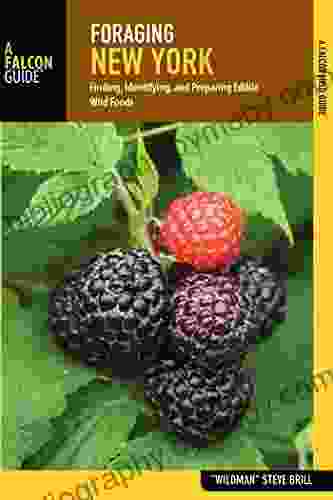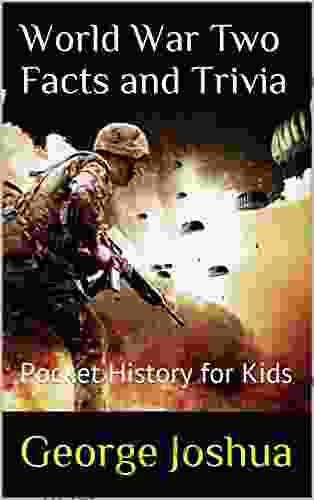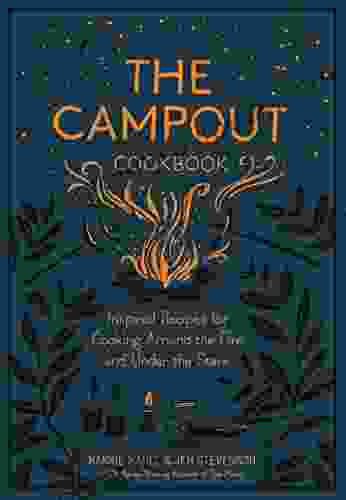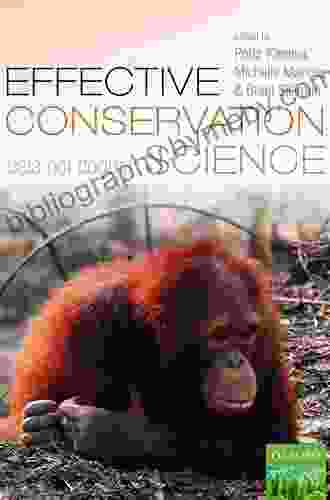Unlock the Hidden Treasures of Nature: Embark on a Journey of Edible Wild Foods

As the world grapples with rising food insecurity and environmental degradation, the ancient practice of foraging is gaining newfound significance. This comprehensive article delves into the fascinating world of edible wild foods, empowering individuals with the knowledge and skills to identify, prepare, and savor these hidden treasures of nature. Join us on this extraordinary journey as we unlock the secrets of foraging, transforming our relationship with food and the environment.
The Benefits of Foraging
Discovering edible wild foods offers a myriad of benefits, extending beyond mere sustenance.
4.7 out of 5
| Language | : | English |
| File size | : | 103469 KB |
| Text-to-Speech | : | Enabled |
| Screen Reader | : | Supported |
| Enhanced typesetting | : | Enabled |
| X-Ray | : | Enabled |
| Word Wise | : | Enabled |
| Print length | : | 352 pages |
- Nutritional Powerhouse: Wild edibles are often packed with essential vitamins, minerals, and antioxidants, making them a valuable addition to a healthy diet.
- Environmental Stewardship: Foraging promotes sustainable practices by reducing reliance on cultivated crops and minimizing food waste.
- Reconnection with Nature: The act of foraging fosters a deeper connection with the natural world, fostering a greater appreciation for its abundance.
- Stress Relief: Spending time outdoors foraging can provide a calming and rejuvenating experience, reducing stress levels.
- Culinary Adventure: Wild foods offer a unique and diverse range of flavors and textures, inspiring culinary creativity and enriching meals.
Identifying Edible Wild Foods
The key to successful foraging lies in accurate identification. Utilize the following techniques to ensure safety:
- Use Field Guides: Invest in comprehensive field guides featuring detailed descriptions, photographs, and identification tips for local edible wild foods.
- Attend Workshops or Classes: Attend workshops or classes led by experienced foragers to gain hands-on experience and learn from their expertise.
- Cross-Reference Sources: Never rely on a single source for identification. Consult multiple field guides and reputable online resources to verify your findings.
- Avoid Poisonous Species: Familiarize yourself with common poisonous plants in your area. Exercise caution and avoid any plants you cannot identify with certainty.
- Start with Common Edibles: Begin by identifying and foraging common edible species, such as dandelions, violets, and blackberries.
Preparing Edible Wild Foods
Once identified, edible wild foods can be safely prepared for consumption.
- Cleaning: Thoroughly clean wild foods to remove dirt, debris, or insects. Rinse them thoroughly with cold water.
- Cooking: Cooking certain wild foods may enhance their flavor and digestibility. Boiling, steaming, or sautéing are common cooking methods for edible plants.
- Preserving: Preserve wild edibles through methods such as drying, freezing, or pickling to extend their shelf life and enjoy their flavors throughout the year.
- Appropriate Portions: Consume wild foods in moderation, as some may have potential side effects. Start with small quantities and monitor your body's response.
- Avoid Contaminants: Avoid foraging in areas potentially contaminated by pesticides, herbicides, or other pollutants.
Legal and Ethical Considerations
Respect for the environment is paramount when foraging. Adhere to the following ethical guidelines:
- Obtain Permission: Obtain permission from landowners before foraging on private property.
- Follow Regulations: Comply with local regulations regarding the collection of wild foods in parks or protected areas.
- Leave No Trace: Practice responsible foraging by leaving the environment undisturbed and avoiding damaging plants or wildlife.
- Sustainability: Harvest only what you need and avoid over-collecting. Respect the natural balance of the ecosystem.
- Share Your Knowledge: Educate others about ethical foraging practices and the importance of preserving our natural resources.
Expand Your Knowledge with Our Book: Finding, Identifying, and Preparing Edible Wild Foods: Foraging Series
Unlock the secrets of edible wild foods with our comprehensive book, "Finding, Identifying, and Preparing Edible Wild Foods: Foraging Series." This invaluable guide provides:
- Detailed Descriptions: In-depth descriptions and stunning photographs of over 100 common edible wild foods.
- Identification Tips: Clear and concise identification tips to ensure accurate recognition in the field.
- Preparation Techniques: Step-by-step instructions for preparing wild foods safely and deliciously.
- Nutritional Information: Detailed nutritional information on each edible wild food, empowering you to make informed dietary choices.
- Foraging Ethics: Essential guidelines for ethical and sustainable foraging practices.
Embarking on the journey of foraging is an enriching experience that connects us with nature, nourishes our bodies, and promotes environmental stewardship. By embracing the principles of accurate identification, responsible preparation, and ethical practices, we can safely and sustainably enjoy the hidden treasures of edible wild foods. Let our book, "Finding, Identifying, and Preparing Edible Wild Foods: Foraging Series," be your trusted companion on this remarkable adventure. Together, let's unlock the bounty of nature and cultivate a deeper appreciation for the interconnectedness of all living things.
4.7 out of 5
| Language | : | English |
| File size | : | 103469 KB |
| Text-to-Speech | : | Enabled |
| Screen Reader | : | Supported |
| Enhanced typesetting | : | Enabled |
| X-Ray | : | Enabled |
| Word Wise | : | Enabled |
| Print length | : | 352 pages |
Do you want to contribute by writing guest posts on this blog?
Please contact us and send us a resume of previous articles that you have written.
 Book
Book Novel
Novel Page
Page Chapter
Chapter Text
Text Story
Story Genre
Genre Reader
Reader Library
Library Paperback
Paperback E-book
E-book Magazine
Magazine Newspaper
Newspaper Paragraph
Paragraph Sentence
Sentence Bookmark
Bookmark Shelf
Shelf Glossary
Glossary Bibliography
Bibliography Foreword
Foreword Preface
Preface Synopsis
Synopsis Annotation
Annotation Footnote
Footnote Manuscript
Manuscript Scroll
Scroll Codex
Codex Tome
Tome Bestseller
Bestseller Classics
Classics Library card
Library card Narrative
Narrative Biography
Biography Autobiography
Autobiography Memoir
Memoir Reference
Reference Encyclopedia
Encyclopedia Gary Coleman
Gary Coleman Michael Kiel
Michael Kiel Garrett Sutton
Garrett Sutton Tim Guest
Tim Guest Parshwika Bhandari
Parshwika Bhandari Linda Riesenberg Fisler
Linda Riesenberg Fisler Garrett Redfield
Garrett Redfield George C Thomas
George C Thomas Jeff Sadler
Jeff Sadler Georges Sada
Georges Sada Winston Churchill
Winston Churchill Robert Byrd
Robert Byrd Pierluigi Spagnolo
Pierluigi Spagnolo George Ehrenhaft
George Ehrenhaft John B Taylor
John B Taylor Gianni La Forza
Gianni La Forza Sara J Weis
Sara J Weis Gergely Orosz
Gergely Orosz Georgia Hunter
Georgia Hunter Gershon Ben Keren
Gershon Ben Keren
Light bulbAdvertise smarter! Our strategic ad space ensures maximum exposure. Reserve your spot today!
 Albert ReedFollow ·2.4k
Albert ReedFollow ·2.4k Ryan FosterFollow ·5k
Ryan FosterFollow ·5k Edison MitchellFollow ·4.2k
Edison MitchellFollow ·4.2k Steve CarterFollow ·7.1k
Steve CarterFollow ·7.1k Derek BellFollow ·14.9k
Derek BellFollow ·14.9k Ian MitchellFollow ·10.2k
Ian MitchellFollow ·10.2k Jamie BellFollow ·13k
Jamie BellFollow ·13k Bryce FosterFollow ·19.7k
Bryce FosterFollow ·19.7k

 Brian West
Brian WestSmedley Butler: The Marines and the Making and Breaking...
: A Marine's...
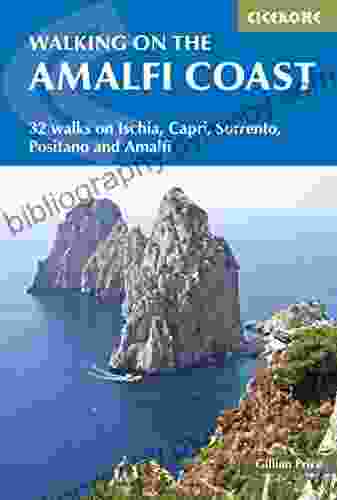
 Gabriel Garcia Marquez
Gabriel Garcia MarquezIschia, Capri, Sorrento, Positano, And Amalfi: An...
Explore the...

 Felix Carter
Felix CarterAdorn Your Little Princess with Fleur Ange's Exquisite...
Welcome to the enchanting...
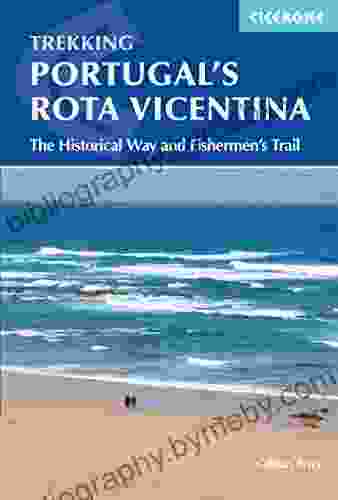
 Kelly Blair
Kelly BlairUnveiling the Secrets of the Historical Way and Fishermen...
Step into the pages...
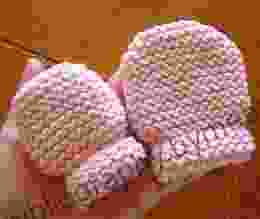
 Angelo Ward
Angelo WardKnit the Cutest Thumbless Mittens for Your Little One:...
Prepare to be...
4.7 out of 5
| Language | : | English |
| File size | : | 103469 KB |
| Text-to-Speech | : | Enabled |
| Screen Reader | : | Supported |
| Enhanced typesetting | : | Enabled |
| X-Ray | : | Enabled |
| Word Wise | : | Enabled |
| Print length | : | 352 pages |


